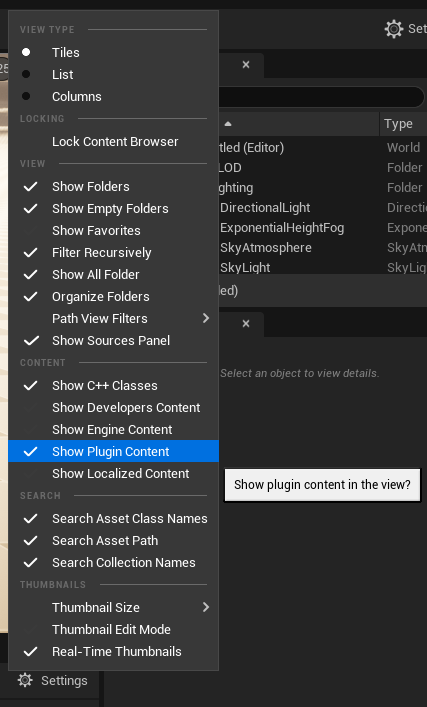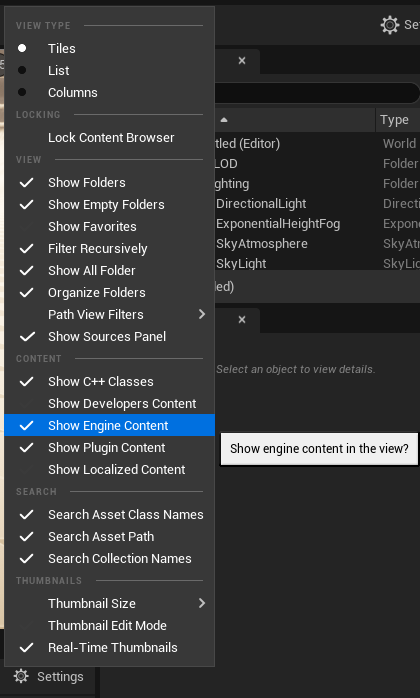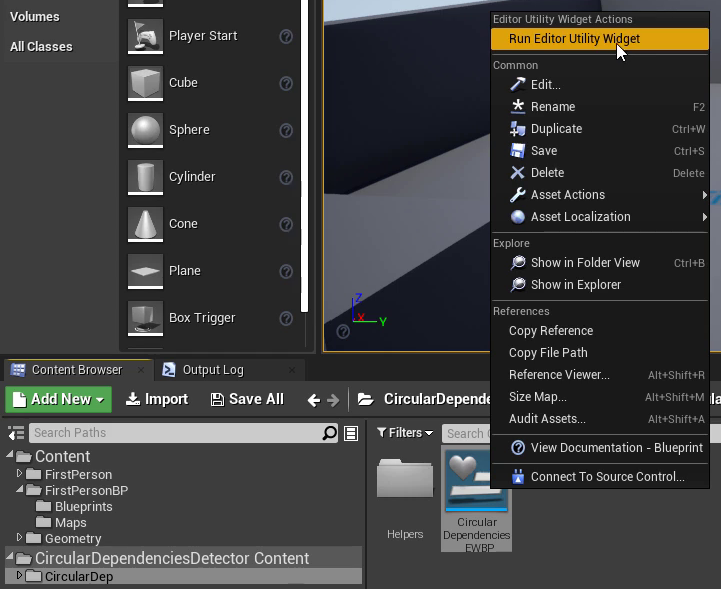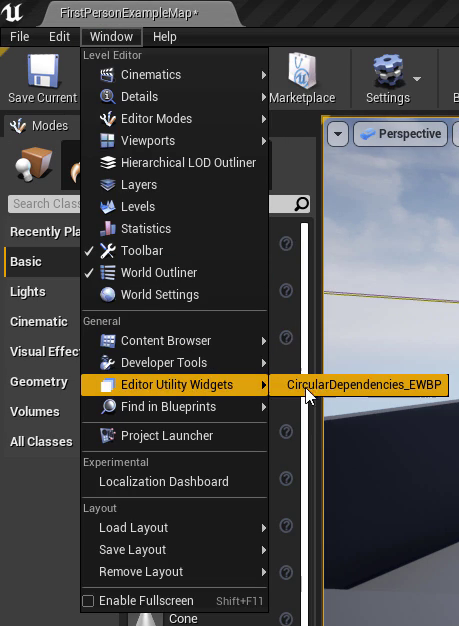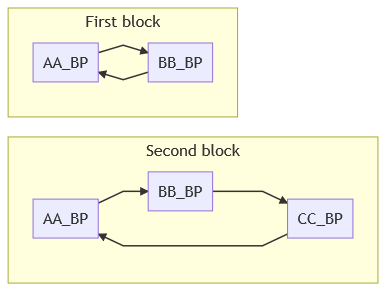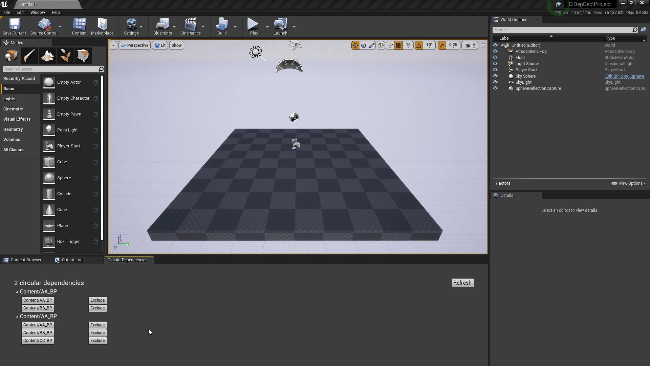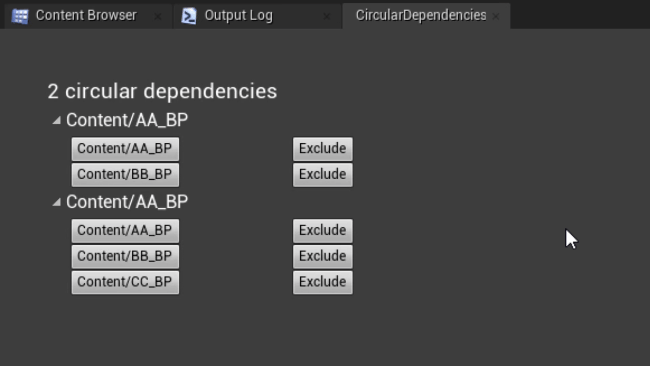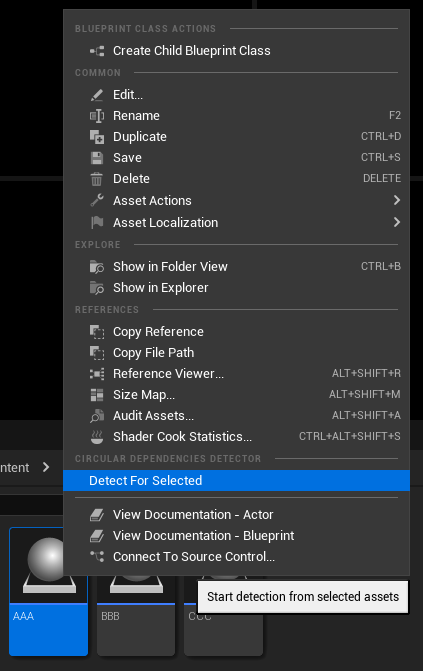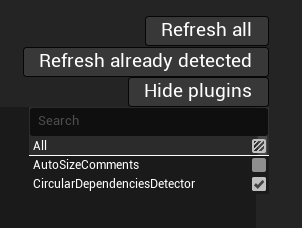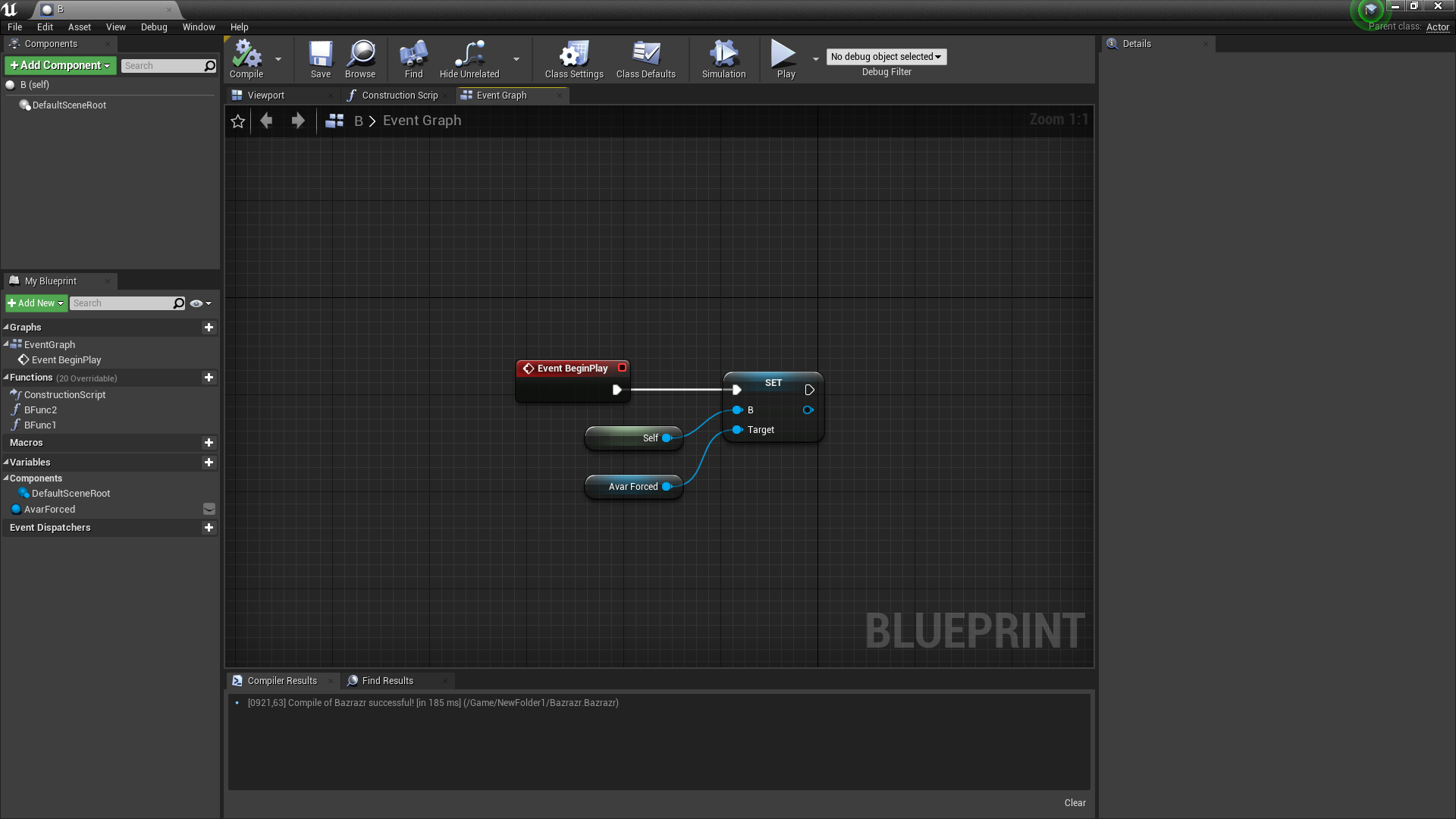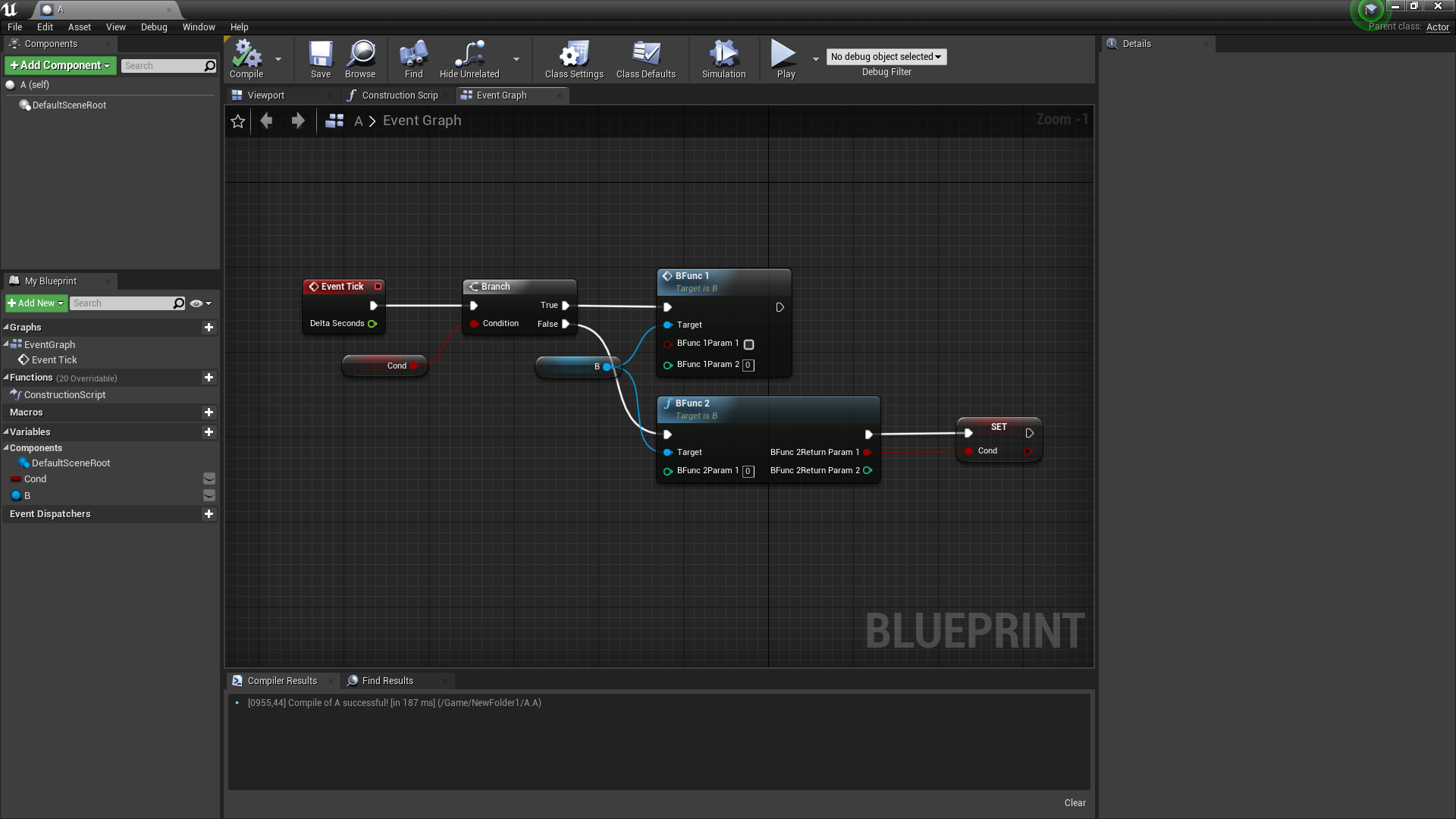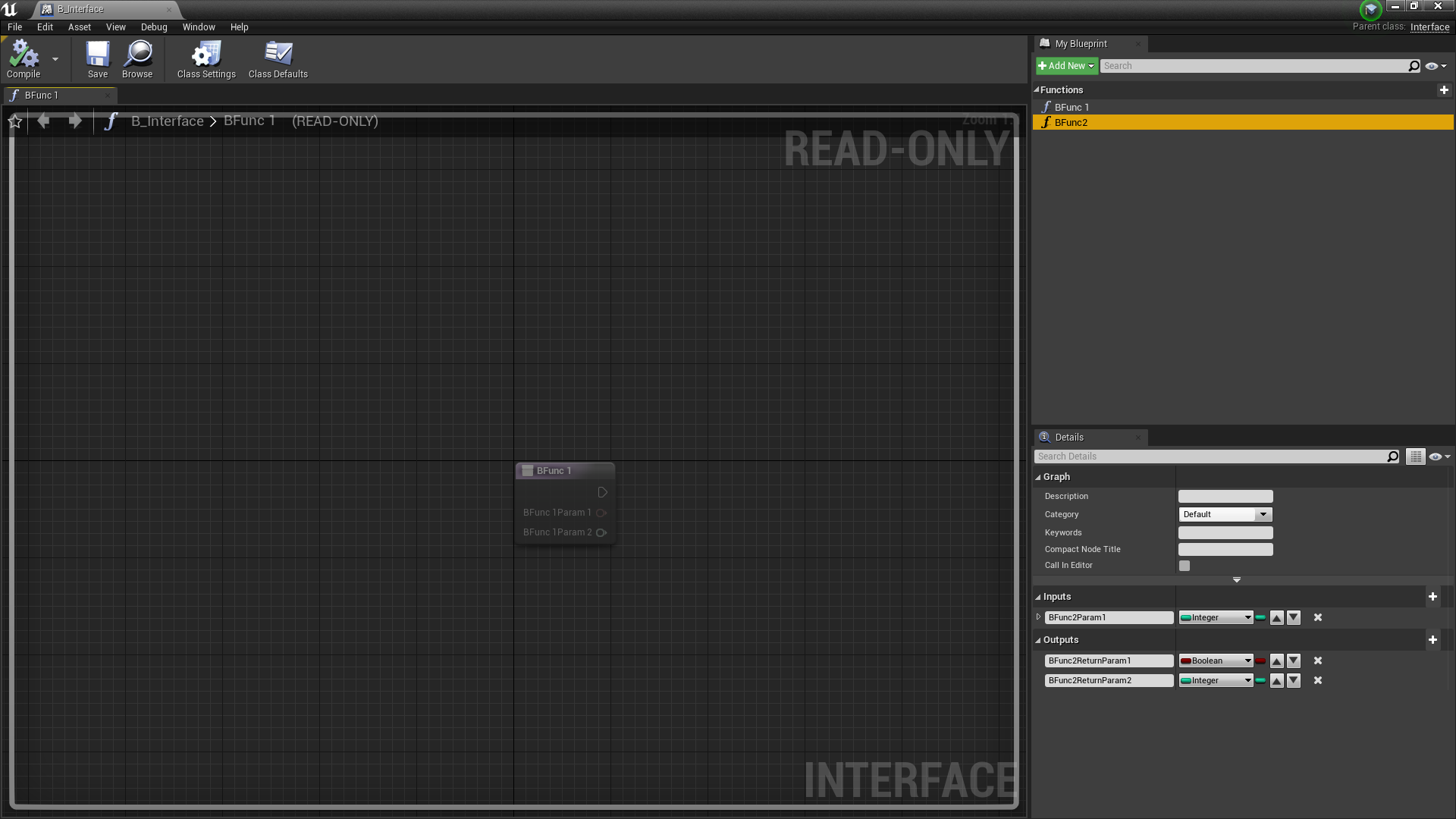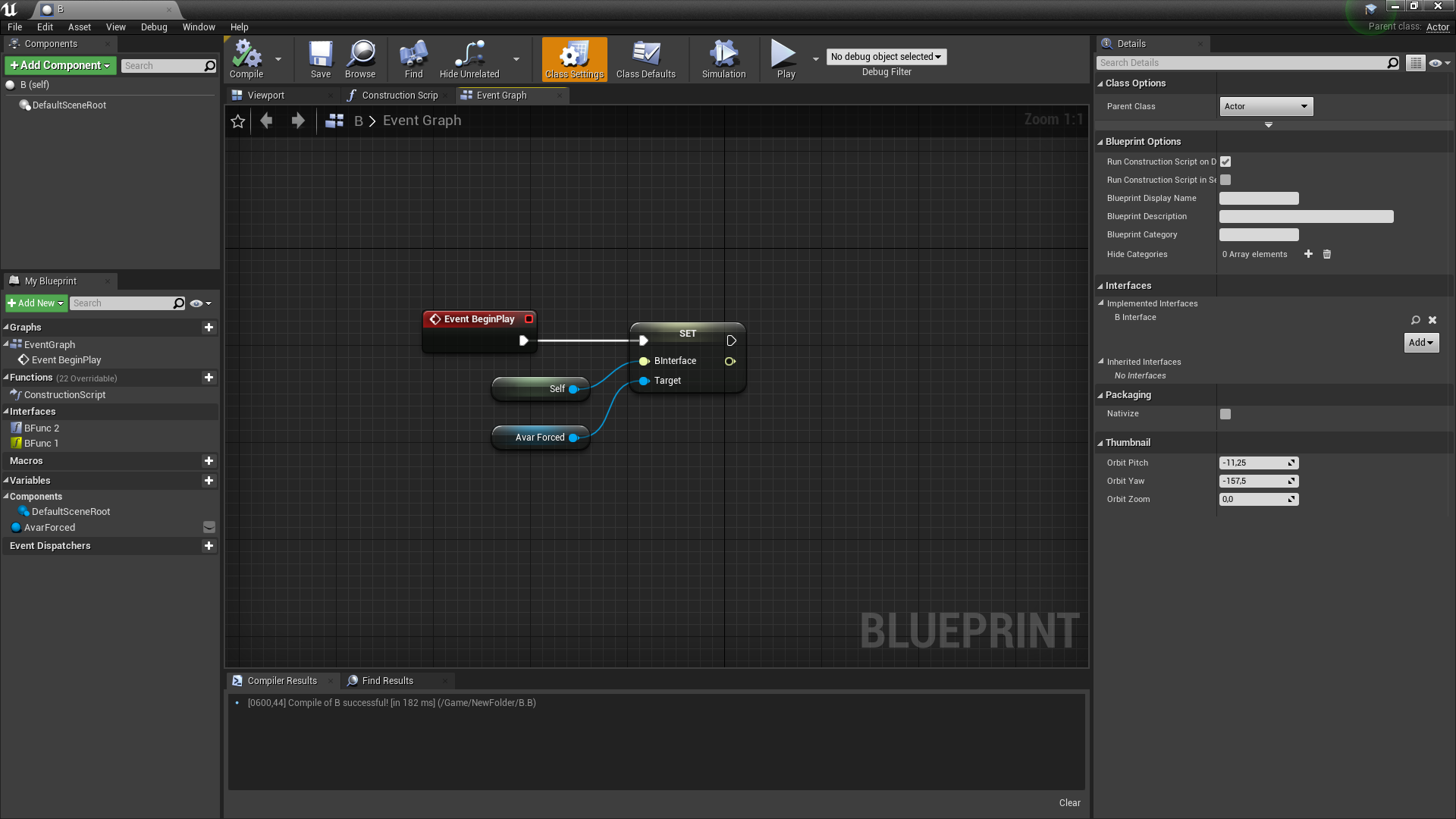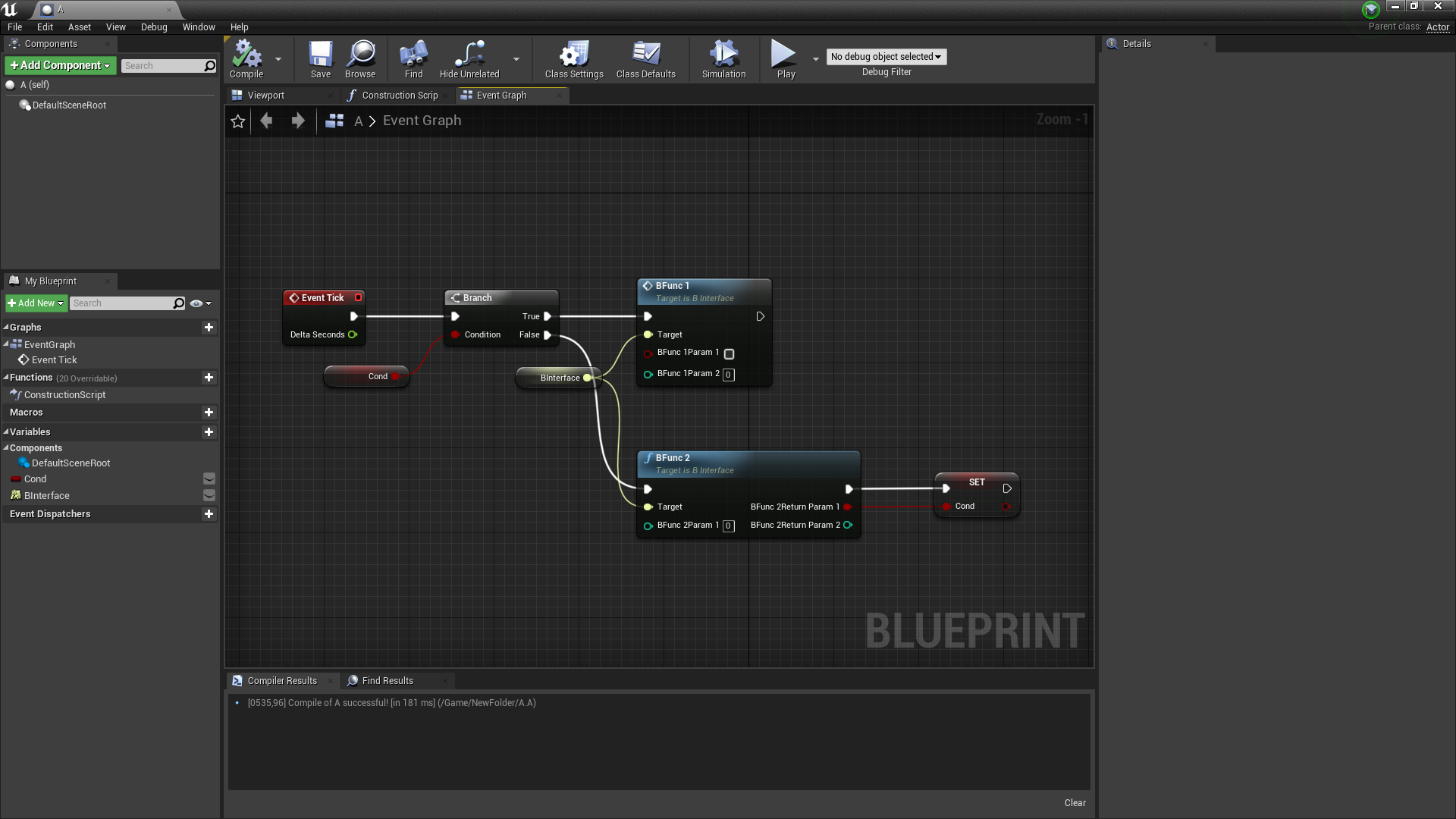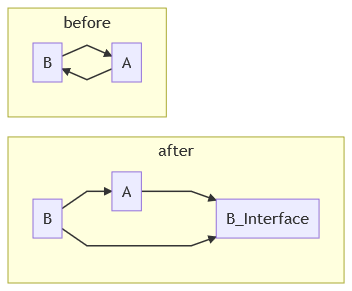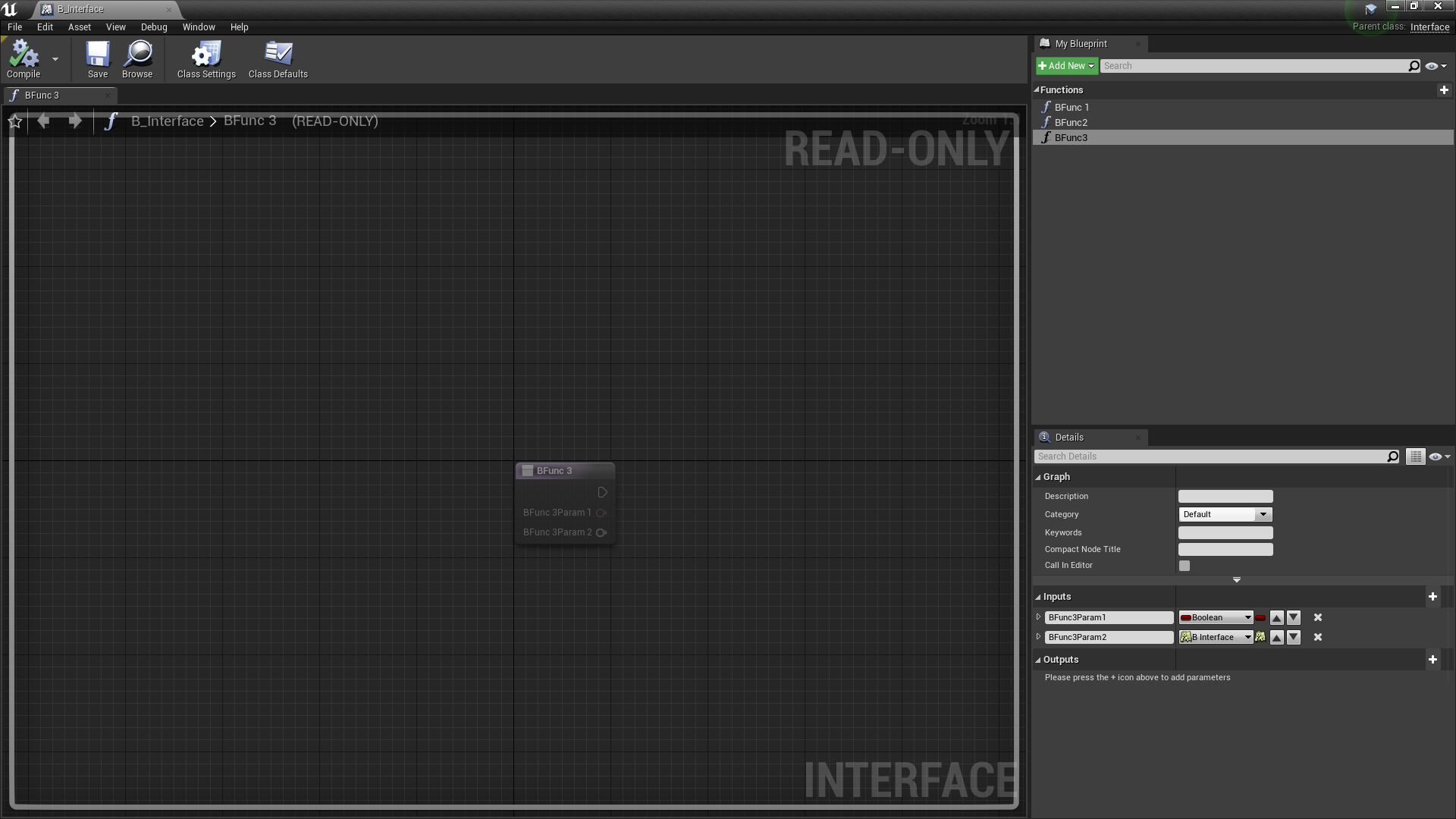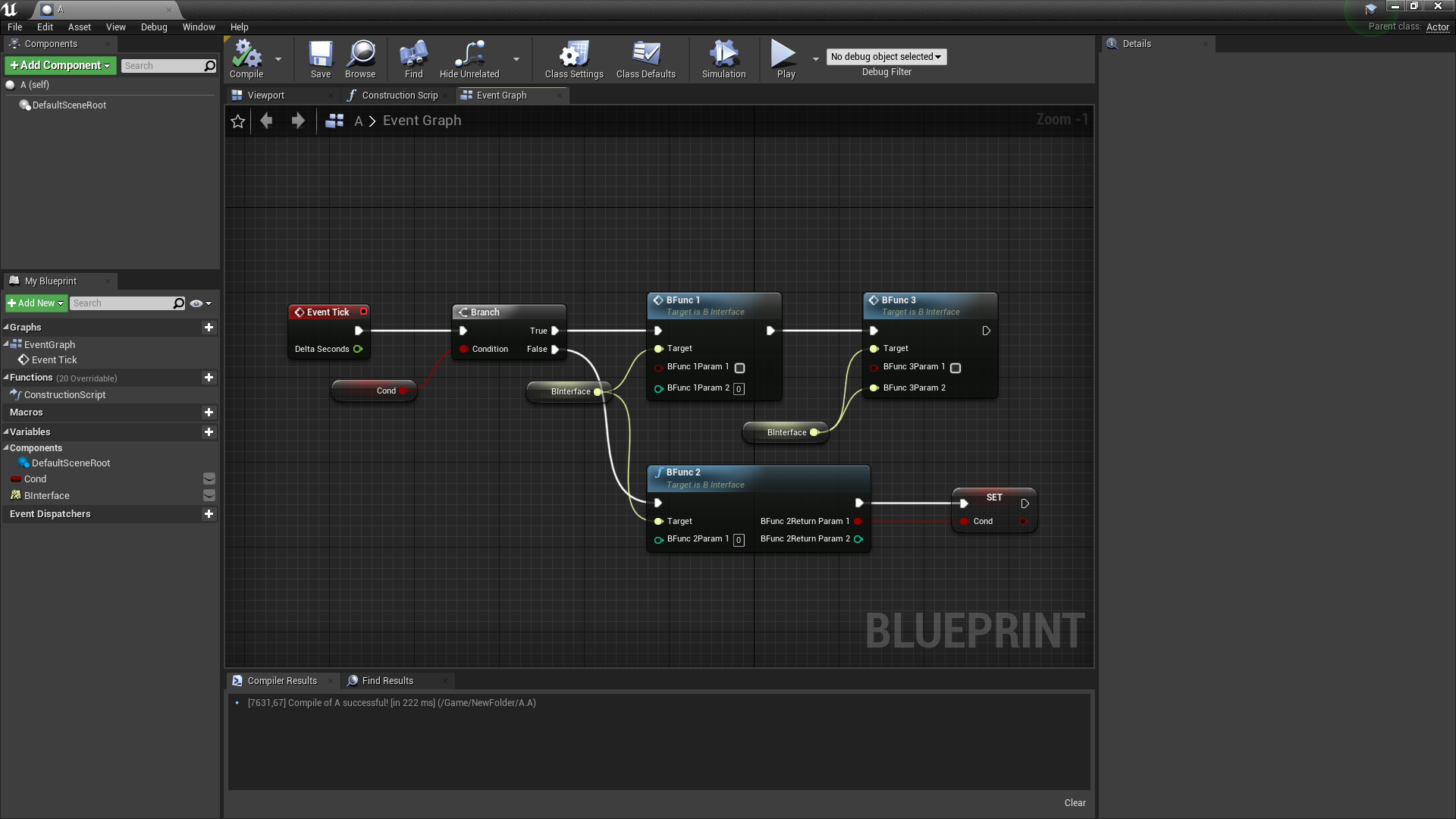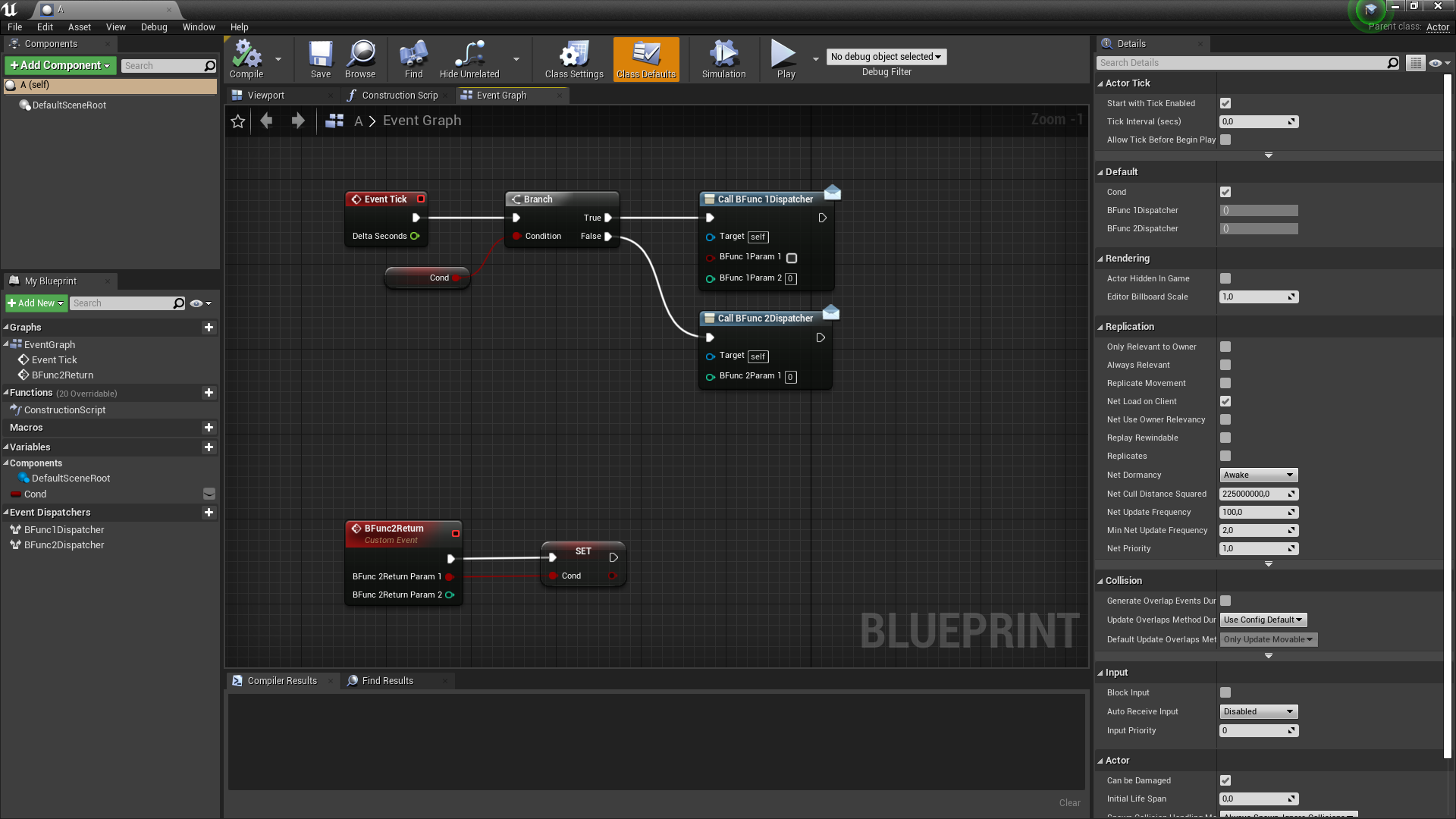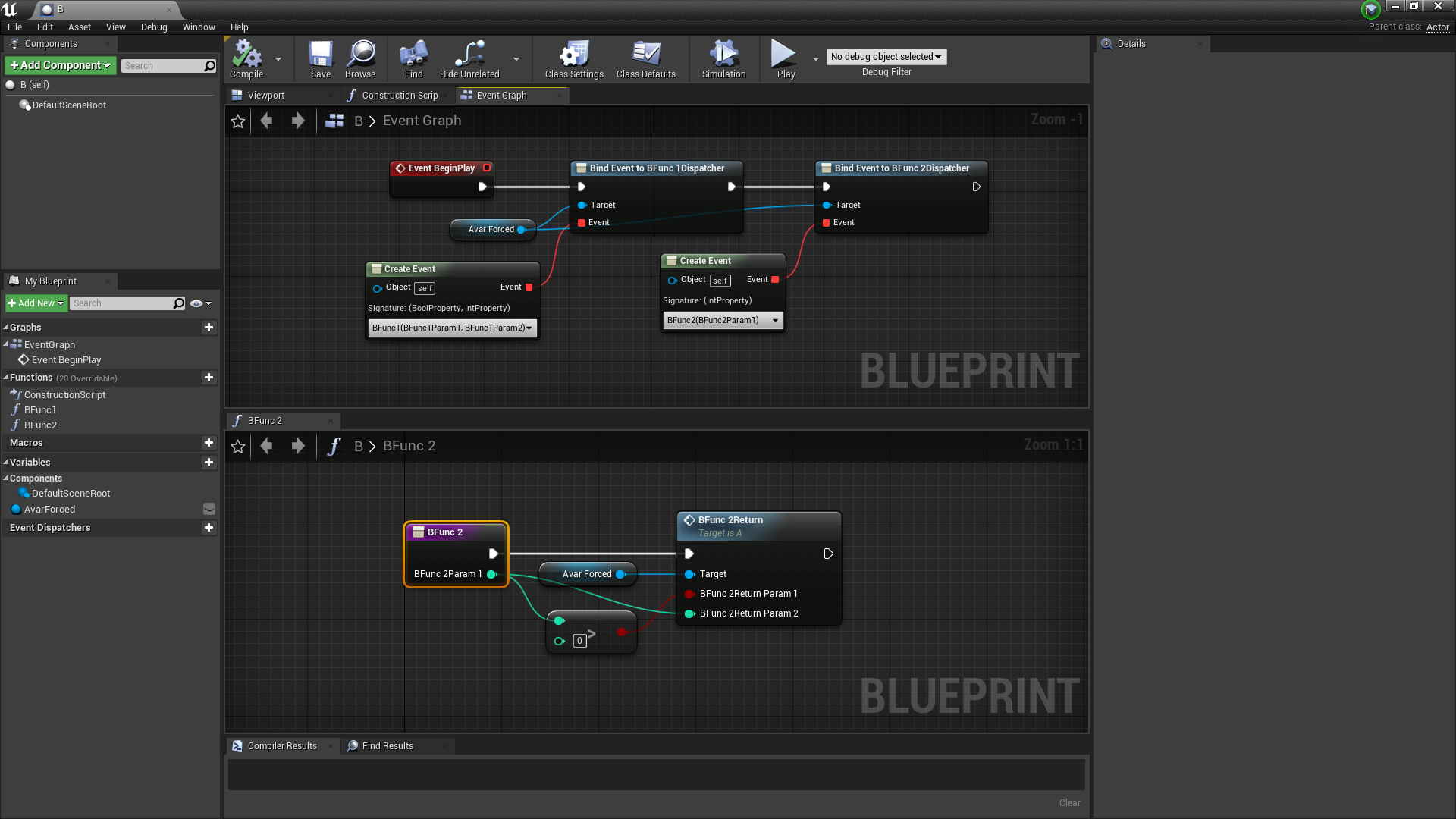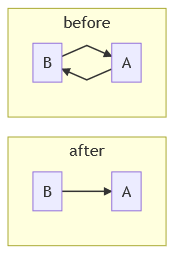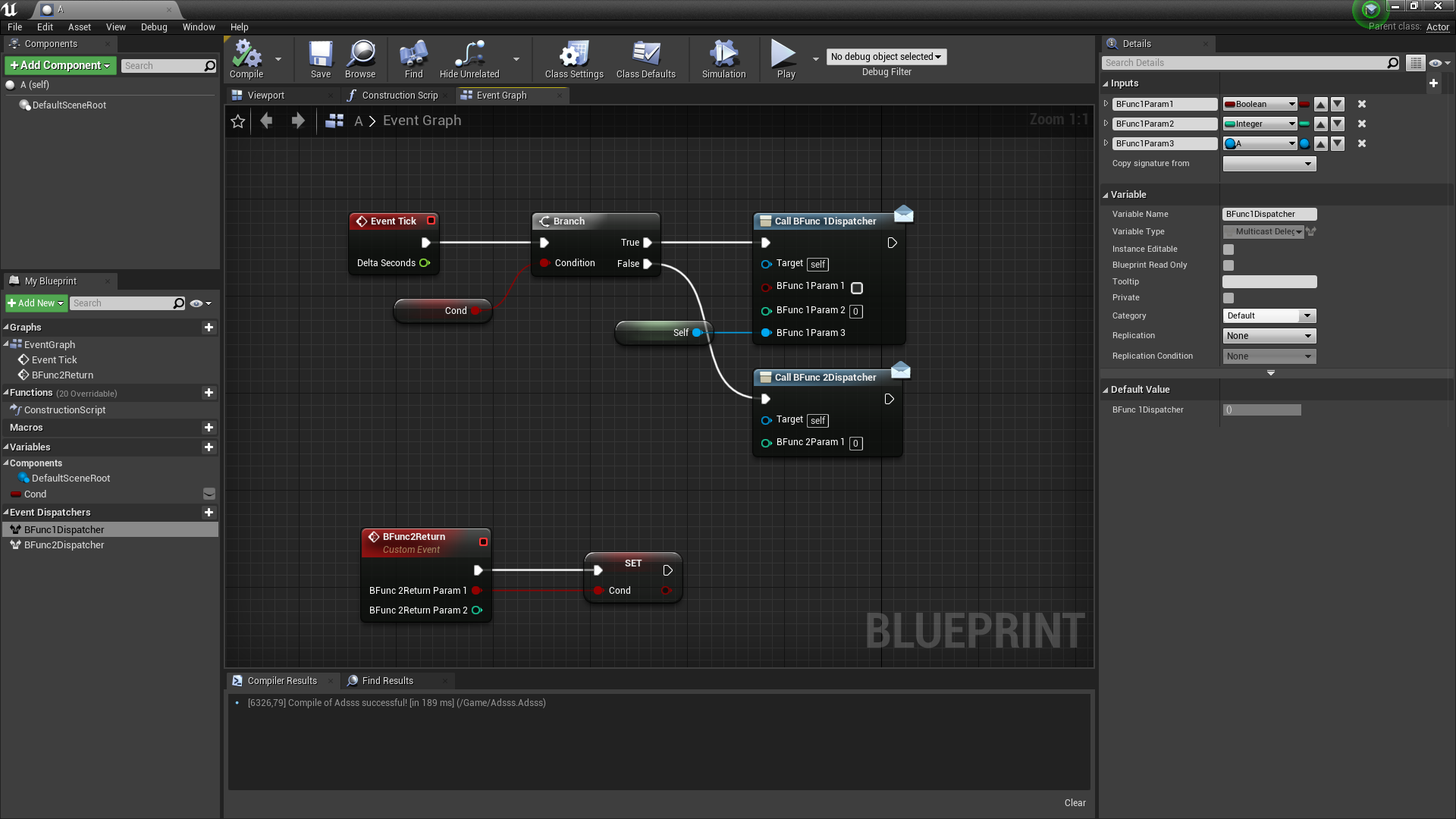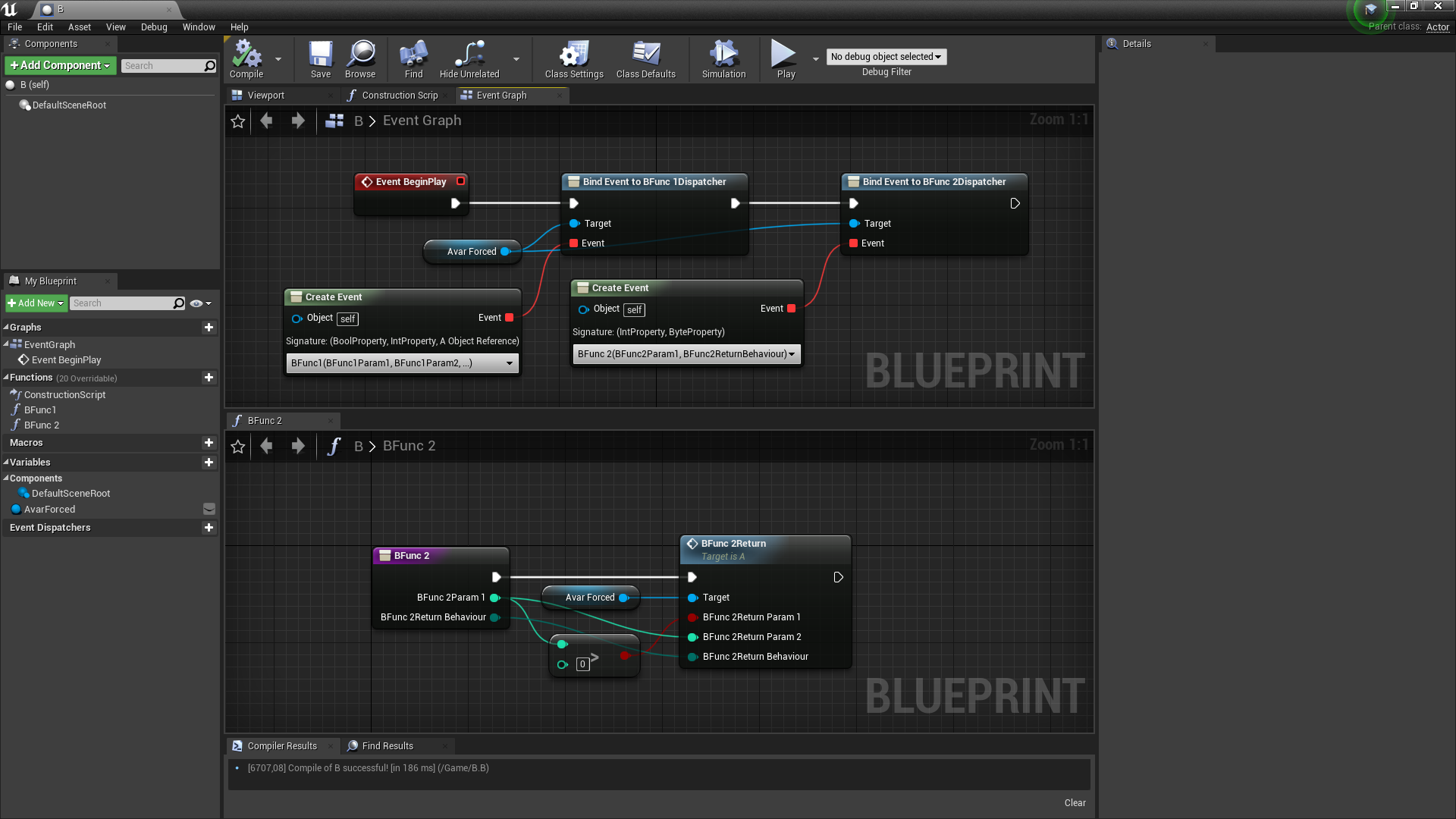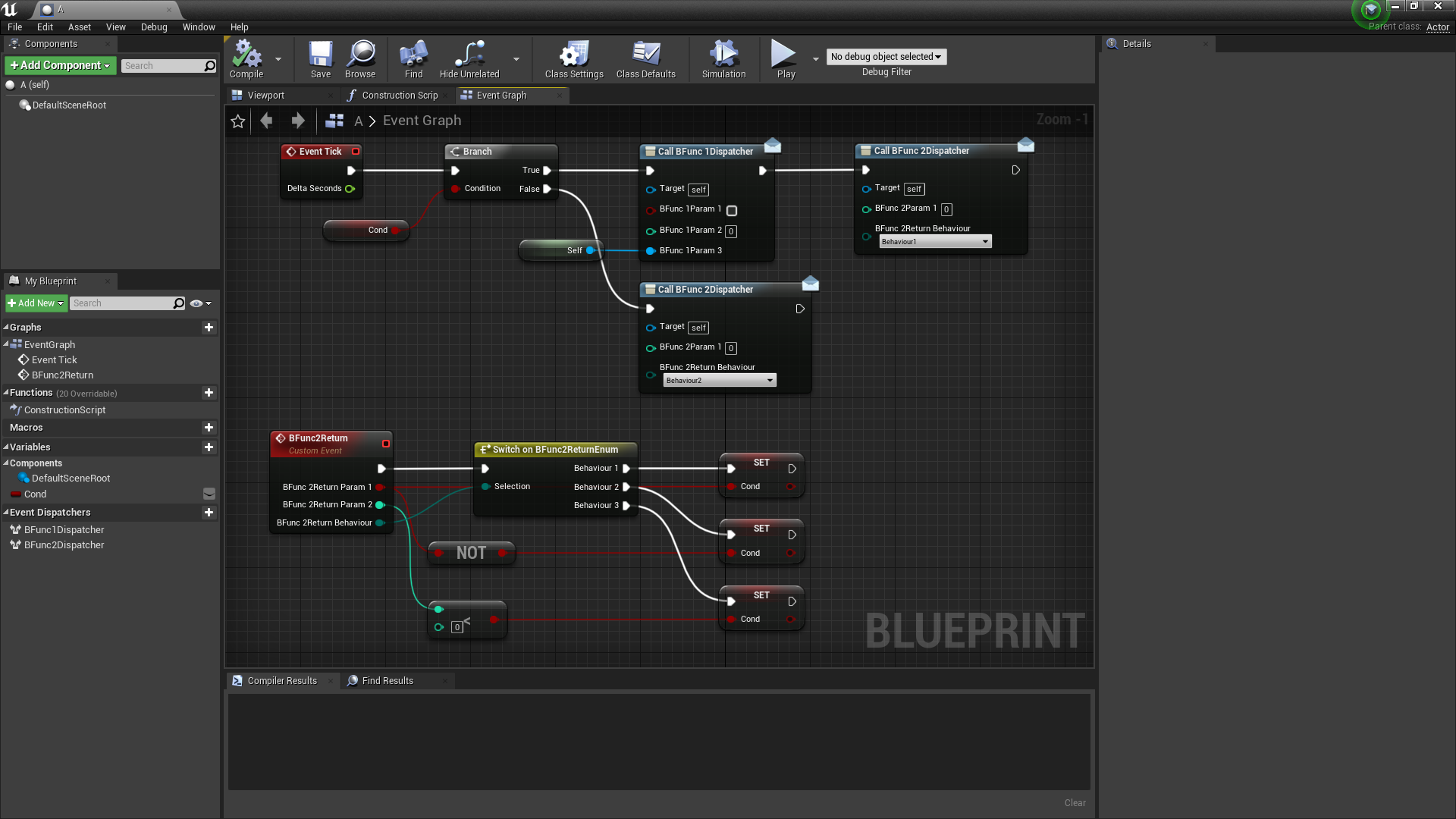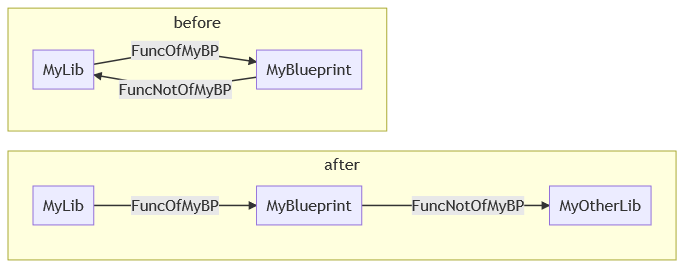Demo Video : https://youtu.be/8ZBd1RLFG3M
Marketplace link : https://www.unrealengine.com/marketplace/en-US/slug/circular-dependencies-detector
With the Circular Dependencies Detector plugin, you can quickly detect in your project all circular dependencies, dependencies in both ways. The detection is done in compile and save time. You can place the Editor Widget wherever you want.
Send by mail any suggestion for the plugin. It will always be considered.
Please report any unexpected behaviours. It will be fixed as soon as possible.
Support e-mail : bstt.ue4@gmail.com
You can get the lastest source code of the plugin on this link.
You can freely get the plugin via the Unreal Engine marketplace in order to automatically get the updates.
1.2. Display
1.3. Refresh all button
1.5. Open asset
1.6. Exclude button
1.7. Contextual menu
1.8. Show plugins
2.1. Show On Startup
2.2. Max Detection Count
2.3. Max Dependency Depth
3.1. Use interfaces
3.2. Use Event Dispatcher
3.4. Redo the design
4. Contact me
Circular Dependencies Detector is a tool that only detect all circular dependencies in a project. You need to manually solve these circular dependencies. Some ways to fix them are explained in the section : Solve circular dependencies.
Show steps in case of Editor Widget not automatically opened
- In Content Browser, enable Show Plugin Content,
- Enable Show Engine Content (It is recommanded to disable Show C++ Classes)
- Go to the Circular Dependencies Detector plugin folder,
- Right click on the CircularDependencies_EWBP (do not double-click),
- Select Run Editor Utility Widget.
If you opened and closed the EWBP, you can re-open it by going to the Edit Menu -> Editor Widget -> Run EWBP.
Displayed by the plugin :
- number of excluded assets
- all excluded assets
- number of circular dependencies
- search bar
- all assets involved in circular dependencies grouped by block.
The current display means this :
(A -> B means A depends on B)
If an asset is displayed in 2 blocks it means that it is involved in 2 different circular dependencies.
All diplayed circular dependencies don't contain the excluded assets.
This button start the detection of circular dependencies on all files.
On compile and save, Unreal Engine compute the dependencies. Sometimes it is not immediately computed. After a short amount of time (30 seconds maximum), you can press the button refresh to check if the dependencies are still present. Sometimes it is wrongly computed especially when dependencies were contained in a node group. Close and open again the blueprint to fix the computation of dependencies.
You can check the current dependencies by opening the Reference viewer (Right click on the asset -> Reference viewer).
The plugin is using only hard referencies.
This button only refresh the circular dependencies already detected.
By default the automatic refresh is only done on the files involved in circular dependencies already detected. If there is none, this is done on all files.
Press the button of a displayed asset in order to open it. The next asset in the circular dependency is automatically search. You just need to manually make the search result empty in order to break the circular dependency.
A specific search is done for Blueprint Function Library.
For each asset involved in a circular dependencies, you can press the Exclude button in order to exclude the asset from the search of all circular dependencies.
For each excluded asset, you can press the Include button in order to include the asset in the search of all circular dependencies.
In content browser, you can right-click on an asset or a folder and select Circular Dependencies Detector -> Detect For selected in order to detect circular dependencies for the selected assets.
The search bar is automatically filled with the selected assets.
By default, the plugin is only searching circular dependencies in the project. You can click on the Show plugins button and select the plugins you want to include in the search.
You can change CDD option in Editor Preferences/Plugins/Circular Dependencies Detector.
Enable this option to spawn the CDD Editor Widget on startup.
This is the number of circular dependencies detected from which detection is interrupted.
This is the length of depenency path from which dependencies are ignored.
This is the delay in seconds before an automatic refresh, put a negative value to disable the automatic refresh.
In Unreal Engine, it is really simple to generate circular dependencies with Blueprint since all blueprints are in the same scope. In C++, you must use forward declaration to have circular dependencies, it means that if you have ones, it's intentional.
Circular dependencies are considered as an anti-pattern because of their negative effects : tight coupling, memory leaks...
They can be avoid by using desing patterns.
Problem :
You have 2 classes A and B, you are forced to make B depends on A and your class A call some functions funcB1 and funcB2 from class B (and then A depends on B).
(A -> B means A depends on B)
Dependency inversion principle is a simple way to resolve dependencies problem.
Solution :
Move the functions funcB1 and funcB2 in an interface B_Interface and call the functions from the interface instead of the class B.
Warning : You must not directely put a reference of class B or any type that depends on class B. You'll need to put a reference of type B_interface or of a type that depends on B_interface.
Observer design pattern is another simple way to resolve dependencies problem.
Solution :
Declare 2 events dispatcher within the class A, one of type funcB1, one of type funcB2, subscribe the class B to these dispatcher and call the dispatcher in your class A.
If you need a return value for your 2 functions, you need to create 2 other functions return_funcB1, return_funcB2 within the class A and call them in class B instead of returning values.
You can even put the object of class A as parameter in order to get the caller (especially needed if there are several callers).
If you have several behaviours after a return value, you can use an enum parameter in order to switch to the behaviour you want to get.
Warning : You can't put a reference of class B or any type that depends on class B.
Problem : (explained with a schema to improve clarity)
- MyBlueprint is a class.
- MyLib is a Blueprint Function Library.
- FuncOfMyBP is a function of MyLib that depends on MyBlueprint.
- FuncNotOfMyBP is a function of MyLib that does NOT depend on MyBlueprint.
- MyBlueprint use the function FuncNotOfMyBP.
- MyBlueprint do NOT use the function FuncOfMyBP.
By the way, a function of MyLib that depends on MyBlueprint and that is used by MyBlueprint uses should be inside of MyBlueprint (cf. Redo the design).
If you can't move the function inside MyBlueprint, you can still use interfaces.
Solution :
Place the function FuncNotOfMyBP in another Blueprint Function Library MyOtherLib.
Note : All functions that depends on MyBlueprint must be in a library that is NOT used by MyBlueprint or inside MyBlueprint.
If you have circular dependencies, it is certainly a design problem. This method is the hardest way to solve this but it is also the best.
There is no specific rule or magic trick to solve it : you'll need to use your brain to fix it.
But here are some tips that can help you to make a good design. Generally all design problem come from a bad data structure, and not from a bad implementation.
You need to wonder :
- Do I really need this ? (Can I get this from another way ?)
- How will I use this ? (Is it displayed ? used for computation ? Is it a storage of a computation ?)
- Do I really need this here ? (Who owns who ?)
It is pretty hard to objectively answer to these questions but it is necessary to improve your data structures.
When you reach the point that you can't improve your data structures anymore, you need to wonder :
- Which object must call this function ? (who interacts with who ?)
When you got an error or a crash :
- Save your project.
- Try to reproduce the error.
- Fill this template e-mail
- Send it at this e-mail address : bstt.ue4@gmail.com
Until a valid fix is found, try right-click on content browser and then Fix up Redirectors in Folder.
Please send the project before trying this.
